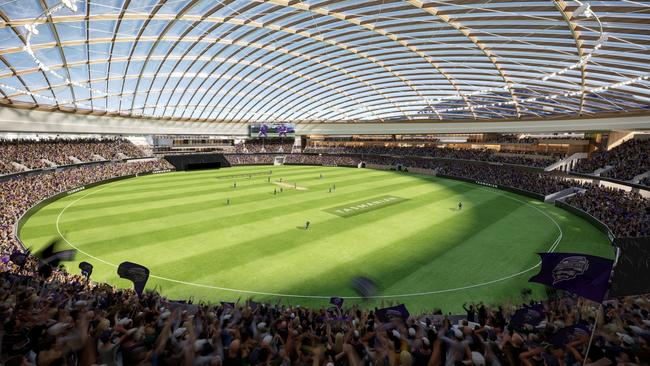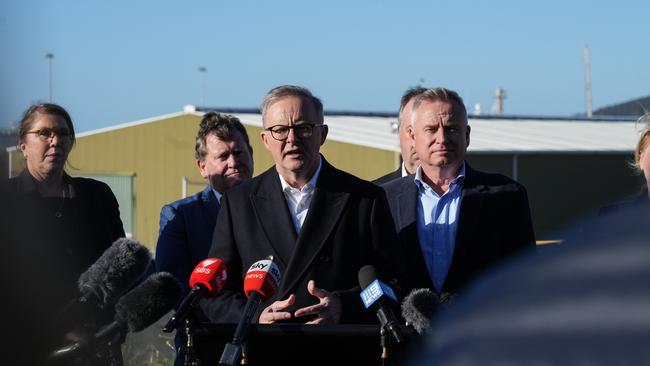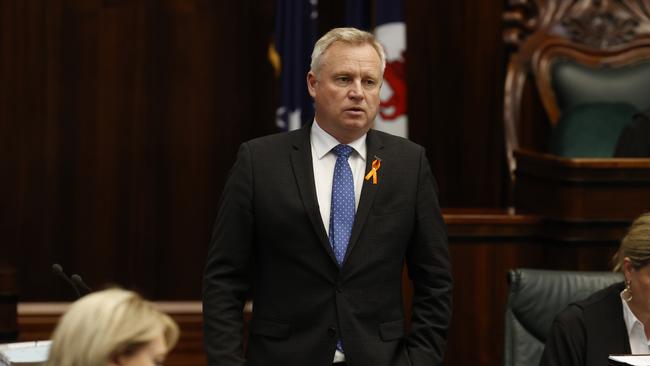ANALYSIS: What Mac Point stadium GST deal means for Tasmania
GST gain is a tempting mirage, Political Editor David Killick writes as he breaks down the numbers behind the stadium deal.

Tasmania
Don't miss out on the headlines from Tasmania. Followed categories will be added to My News.
The announcement that the federal government has exempted $240m in Macquarie Point funding from the GST calculations comes as welcome news for the cash-strapped Tasmanian budget.
A big boost from the federal government is always welcome, but sharp minds knew all along that the original funding announcement came with a catch.
Specific purpose payments made by the federal government are generally offset by a corresponding decrease in general purpose payments over time.
The Commonwealth Grants Commission may not grab headlines with it’s sexy talk of horizontal fiscal equalisation, but it is very efficient with its rationales of how the GST pie is sliced.

Tasmania does well out of the GST, getting $1.82 back for every dollar we put in.
The proceeds have traditionally made up 40 per cent of the state budget, so we’re very sensitive to anything that might hit our take.
A one-off boost of $240m sounds like a lot of money but what looks on its face to be a big win will fade into the background noise of natural budget variations.
That $240m would have been offset over several budgets, depending on the timing of when it was drawn down as the Macquarie Point project proceeds, but $60m a year might be a good back of the envelope figure.
Tasmania’s share of GST in 2023/24 was 3.8 per cent or $3.257bn, according to the Commonwealth Grant Commission. It is 3.9 per cent or $3.476bn this financial year.
So $60m a year is a 1.84 per cent fillip.
But — oh and it gets way more complex — the size of our slice is also affected by the size of the pie, or at least estimates of the size of the pie. If spending is down, a consumption tax produces less revenue. And if other states’ population rises faster than ours, their share grows quicker.

The federal budget estimates Tasmania’s GST share at $3,404bn in 2024/25. Our budget estimates it at $3.519bn.
Those big numbers just won’t stop dancing around, keep in mind none of them will be spot-on.
There’s $115m between the high and low estimates, a typical annual variation that’s twice Friday’s theoretical gain.
It would be a brave state treasurer who tried to cash a cheque $60m or $240m on the back of Friday’s announcement.
There was no shortage of folk keen to claim credit for Jim Chalmers’ decision on Friday: Independent Senator Tammy Tyrrell, Liberal Senator Jonno Duniam, former state Treasurer Michael Ferguson, the state liberals, state Labor and federal Labor.
Tasmanians are in their debt.
What does it all mean? It means a federal election is on the way and Tasmania will be a key battleground. Expect more of the same.
More Coverage
Originally published as ANALYSIS: What Mac Point stadium GST deal means for Tasmania





